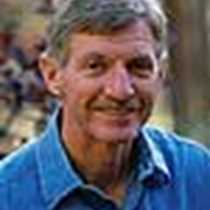Olympia, Greece
What a glorious day! A golden discus of a sun rose over the azure Ionian Sea. In the morning we heard from geologist Jim Kelley about the amazingly active tectonic region of Crete and the Aegean Sea. A little later, historian Robyn Woodward prepped us for our afternoon visit to Olympia with a talk on Greek Sanctuaries and Greek Temples. What better way to gain knowledge than by being at the actually place you are learning about with experts on the matter.
After lunch, we disembarked at Katakolon on the large island of Peloponnesus. A picturesque drive through the rolling countryside brought us to the site of Olympia, the home of the famous Panhellenic Festival that was held here every four years beginning in 776 B.C. We strolled through the remains of the Temple of Hera; the renowned Temple of Zeus, where a 12-meter high statue of him once stood (one of the seven wonders of the ancient world); the Gymnasium; the Palaestra (wrestling school); and the Olympic Stadium.
As a runner, it was a thrill to do a short jog on the Olympian field. With a little imagination, I thought I could hear the ancient crowd cheering. But, no, it was some of my fellow travelers teasing me that unlike my naked Greek predecessors, I chose to wear shorts and shoes.
In the Olympia Archaeological Museum, we marveled at the expertly carved statues excavated from the site and learned more about these ancient times from out local guides.
Afterwards, we bussed to the beautiful Mercouri Estate, where the Kanellakopoulos family has produced wine, olive oil, and many other Mediterranean staples for generations. We sat among stately pines at the edge of a vibrant vineyard with views of the sea, sampling the famous wines, olives, and cheese.
Once back on the National Geographic Explorer, we were treated to a Greek Buffet Dinner, which completed our lovely second day of exploring the rich culture and history of Greece.
What a glorious day! A golden discus of a sun rose over the azure Ionian Sea. In the morning we heard from geologist Jim Kelley about the amazingly active tectonic region of Crete and the Aegean Sea. A little later, historian Robyn Woodward prepped us for our afternoon visit to Olympia with a talk on Greek Sanctuaries and Greek Temples. What better way to gain knowledge than by being at the actually place you are learning about with experts on the matter.
After lunch, we disembarked at Katakolon on the large island of Peloponnesus. A picturesque drive through the rolling countryside brought us to the site of Olympia, the home of the famous Panhellenic Festival that was held here every four years beginning in 776 B.C. We strolled through the remains of the Temple of Hera; the renowned Temple of Zeus, where a 12-meter high statue of him once stood (one of the seven wonders of the ancient world); the Gymnasium; the Palaestra (wrestling school); and the Olympic Stadium.
As a runner, it was a thrill to do a short jog on the Olympian field. With a little imagination, I thought I could hear the ancient crowd cheering. But, no, it was some of my fellow travelers teasing me that unlike my naked Greek predecessors, I chose to wear shorts and shoes.
In the Olympia Archaeological Museum, we marveled at the expertly carved statues excavated from the site and learned more about these ancient times from out local guides.
Afterwards, we bussed to the beautiful Mercouri Estate, where the Kanellakopoulos family has produced wine, olive oil, and many other Mediterranean staples for generations. We sat among stately pines at the edge of a vibrant vineyard with views of the sea, sampling the famous wines, olives, and cheese.
Once back on the National Geographic Explorer, we were treated to a Greek Buffet Dinner, which completed our lovely second day of exploring the rich culture and history of Greece.



